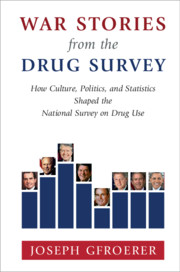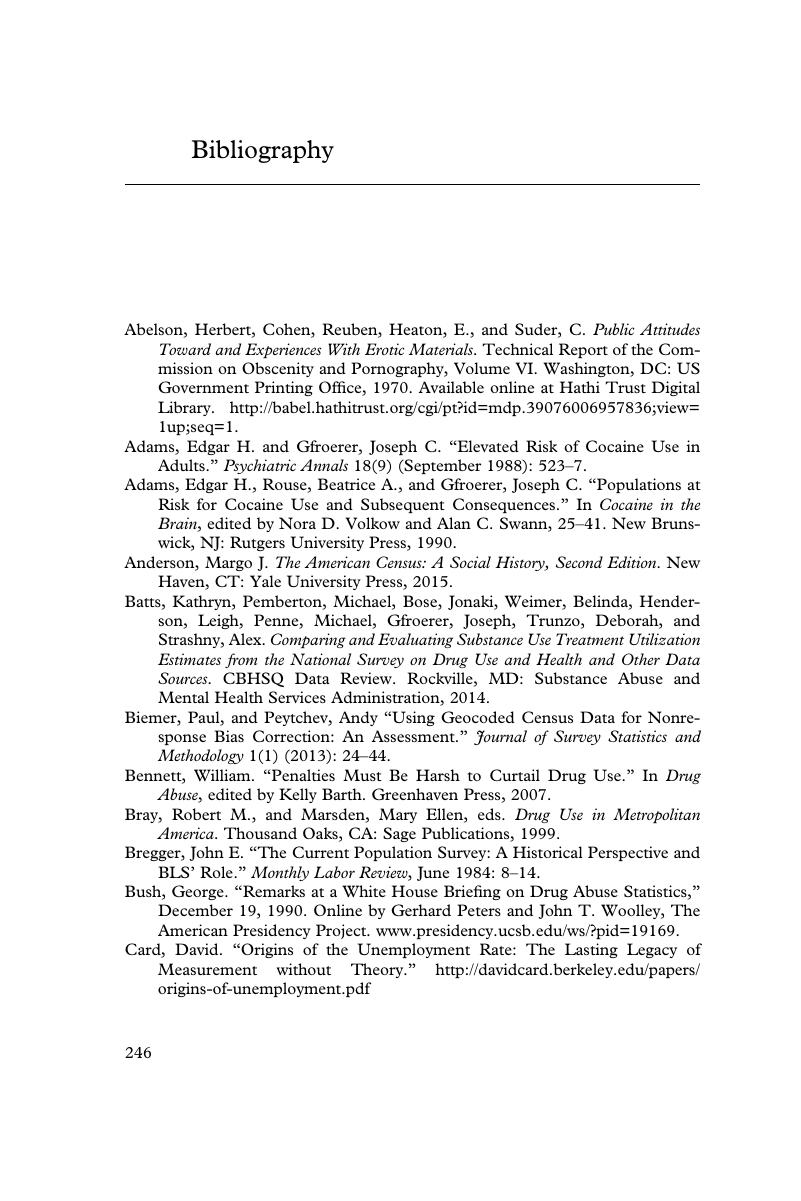 War Stories from the Drug Survey
War Stories from the Drug Survey Book contents
- War Stories from the Drug Survey
- War Stories from the Drug Survey
- Copyright page
- Dedication
- Contents
- Figures
- Tables
- Preface
- Acknowledgments
- Acronyms
- Introduction
- 1 President Nixon Launches the War on Drugs
- 2 The Survey Continues, As Illicit Drug Use Peaks
- Wrap-Up for Chapters 1 and 2
- 3 Cocaine and New Directions for the Survey
- 4 The White House Needs Data and a Bigger Survey
- 5 Criticism, Correction, and Communication
- Wrap-Up for Chapters 3, 4, and 5
- 6 The Survey Moves to SAMHSA
- 7 Rising Youth Drug Use in the 1990s
- 8 Better Sample, Better Analysis, but Not Always
- Wrap-Up for Chapters 6, 7, and 8
- 9 A Perfect Redesign Storm
- 10 Continuing Survey Design Improvements
- Wrap-Up for Chapters 9 and 10
- 11 Analytic Bankruptcy, Reorganization, Recovery, and Resilience
- 12 How to Redesign an Ongoing Survey, Or Not
- Wrap-Up for Chapters 11 and 12
- 13 Lessons Learned and Future Challenges
- Appendix
- Bibliography
- Index
- References
Bibliography
Published online by Cambridge University Press: 27 November 2018
- War Stories from the Drug Survey
- War Stories from the Drug Survey
- Copyright page
- Dedication
- Contents
- Figures
- Tables
- Preface
- Acknowledgments
- Acronyms
- Introduction
- 1 President Nixon Launches the War on Drugs
- 2 The Survey Continues, As Illicit Drug Use Peaks
- Wrap-Up for Chapters 1 and 2
- 3 Cocaine and New Directions for the Survey
- 4 The White House Needs Data and a Bigger Survey
- 5 Criticism, Correction, and Communication
- Wrap-Up for Chapters 3, 4, and 5
- 6 The Survey Moves to SAMHSA
- 7 Rising Youth Drug Use in the 1990s
- 8 Better Sample, Better Analysis, but Not Always
- Wrap-Up for Chapters 6, 7, and 8
- 9 A Perfect Redesign Storm
- 10 Continuing Survey Design Improvements
- Wrap-Up for Chapters 9 and 10
- 11 Analytic Bankruptcy, Reorganization, Recovery, and Resilience
- 12 How to Redesign an Ongoing Survey, Or Not
- Wrap-Up for Chapters 11 and 12
- 13 Lessons Learned and Future Challenges
- Appendix
- Bibliography
- Index
- References
Summary

- Type
- Chapter
- Information
- War Stories from the Drug SurveyHow Culture, Politics, and Statistics Shaped the National Survey on Drug Use and Health, pp. 246 - 255Publisher: Cambridge University PressPrint publication year: 2018


